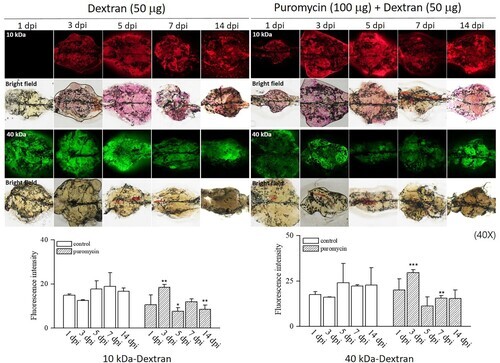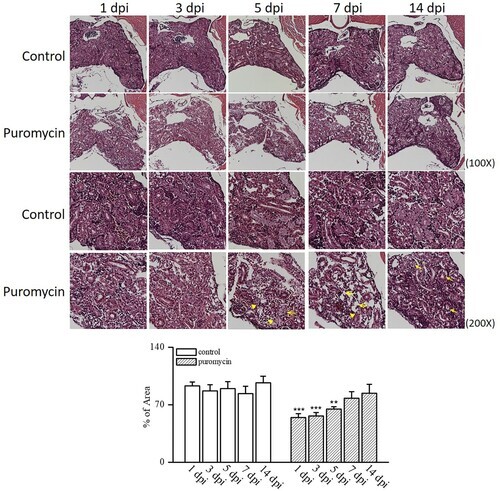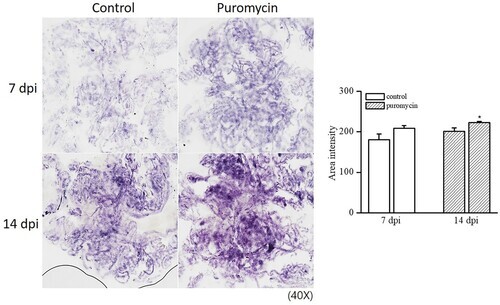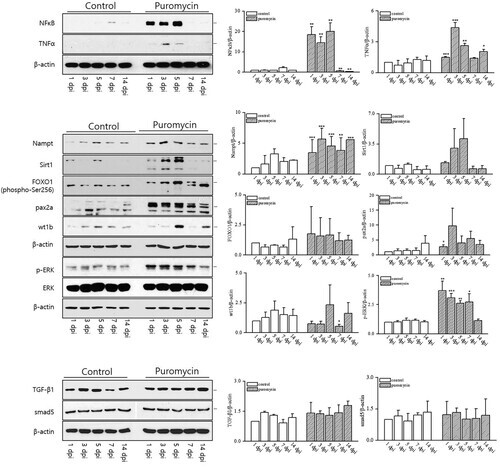- Title
-
Puromycin-induced kidney injury and subsequent regeneration in adult zebrafish
- Authors
- Koun, S., Park, H.J., Jung, S.M., Cha, J.J., Cha, D.R., Kang, Y.S.
- Source
- Full text @ Animal Cells Syst (Seoul)
|
Survival after puromycin administration. The flowchart shows the schematic timeline of the experimental procedures. Approximately 75% of the injected animals survived on day 0 and showed no mortality until sacrifice. dpi, days post-injection; con, control; puro, puromycin |
|
Dextran filtration assays. The puromycin-treated group showed higher fluorescence intensity than the controls at 3 dpi and lower fluorescence intensity than the controls at 5, 7, and 14 dpi. Both 10 and 40 kDa rhodamine dextran washed out of the kidneys of puromycin-treated zebrafish more rapidly than from the controls. *p < 0.5 **p < 0.01 ***p < 0.001 vs. controls |
|
Histological findings after puromycin administration using H&E staining. The puromycin-treated group showed severe renal tubular necrosis (open arrows) and interstitial inflammation (arrowheads), but the nephrons (closed arrows) had regenerated at 7 and 14 dpi. The quantitative analysis of nephrons after puromycin treatment shows lower scores than the controls until 7 and 14 dpi. **p < 0.01 ***p < 0.001 vs. controls |
|
Lim homobox 1a (lhx1a) expression as a renal progenitor marker by in situ hybridization. lhx1a production increased during recovery from acute kidney injury by puromycin administration. *p < 0.5 vs. controls |
|
The renal molecular pathways induced by puromycin administration. NFκB production increased significantly from 1 dpi to 5 dpi and then decreased until 14 dpi. TNFα increased at 1, 3, 5, and 14 dpi. Nampt expression also increased significantly from 1 to 14 dpi. p-ERK increased significantly during nephron injury and regeneration. *p < 0.5 **p < 0.01 ***p < 0.001 vs. controls (SPSS, Student’s t-test) |





